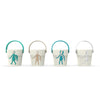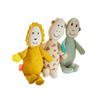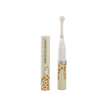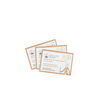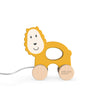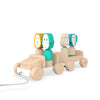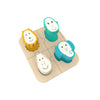How To Comfort an Autistic Baby or Toddler
Many autistic children have obsessions, routines, or rituals. They can find change and transitions difficult to cope with. They might like to eat, sleep, or leave the house, in the same way, every time. They might get upset if their route to the nursery is changed, or they might insist on putting their clothes on in the same order each morning. Each child is unique, and you must be understanding of that.
There are many ways to connect with your baby or toddler and reduce the stress felt during a meltdown or tantrum, and with these comforting methods, you can help your child reach a calmer state much faster.
Why do Autistic children have meltdowns?
When a child has a meltdown, parents often want to stop the tears because it breaks their heart that the child is struggling in some way. Or it can be common that patience is running low, and all the parent is asking for is peace and quiet.
Children with autism are not crying, wailing, or flailing to get attention somehow. They are crying because it is what their bodies need to do at that moment. They feel the need to release tension and emotion because they are feeling overwhelmed with emotions or sensory stimulations. Their brains are wired differently and as a result, that is how they interact with the world.
Show them empathy and focus
Sometimes children are so lost in their emotions that they do not even acknowledge others around them. Simply sit with them or be as near to them that they are comfortable with. Do not punish them, let them know they are supported, and ignore any bystanders. Put the focus on the child and their needs.
Break out the sensory tool kit
This is a great idea if you are on a road trip in the car or going on holiday on an airplane. A portable sensory toolkit will provide the necessary sensory inputs to help your child regulate and combat motion sickness and sensory overload.
Children do tend to have their favourite toys, but this can be a great way to distract them if their minds are feeling a little overwhelmed. Here are 5 great toy ideas for children on the Autism Spectrum.
Teach them coping techniques once they have calmed down
Work on emotional regulation together. Many different approaches may help calm a baby or a toddler, for example, singing a familiar song, going for a walk in the park, or taking part in kids’ yoga to help with deep breathing.
Preparation and Planning is key
There are some transitions and changes to daily routines that you can prepare for because you know about them in advance. If your child knows what to expect, they might cope better with these kinds of changes.
Tell your child what to expect, turn it into a story by using pictures, words, or both to describe leaving the house, arriving at the destination, and so on. Ending the story on a positive note is a good idea, for example,“Once we finish at the doctor’s, we can go to the park!”
Allow extra time. This can relate to visiting the destination beforehand, giving the child 15 minutes extra to get dressed or eat breakfast, or taking some time out of your day to look at pictures of the destination on the internet.
By letting your child know what to expect, you cut down on surprises and reassure your child that it will be a positive experience.
Related Blogs: - Sensory Activities for Babies & Toddlers with Autism














